Gelf
"So... yer one of those Norns then... heard about ya... heard ya hav' a tradition. Ye walk down to the underdark... and who returns after a night is a grown man... Impressive..." The black haired Norn, his name was Arrok, and he was clad in black leather and draped with several daggers, a bow and a longsword, that was strapped over his back, looked down. Was forced to, because his torso had to hunch forward, such that he would even fit into the gelf tavern. The hilt of his damn sword scraped against the stone ceiling whenever he moved. His wolven friend had it even worse, he almost had to crouch, but at least bend his knees. Something was different in this place. People on this side of the Inner Sea usually reacted... differently when seing them. Not because he was elvish. They had eadun elves here... well not technically here but a few days travel eastward. "Humanized elves" as he called them, victims of civilization. It was always good to have someone to look down onto. No it were his weapons, his clothes, his attitude and the fact that he was in company of a two meter twenty package of fur and claw, and also weapons. There was a certain respect he had gotten used to, which he only realized, now that it was missing. "You are not the..." he started but the gelf woman, who had come in with a whole bunch of other gelf just a few moments earlier and already overtaken the bar, interrupted him mid-sentence. She also had blades. And a chainmail, and her leather pauldrons were covered with metal scales. She smiled the brightest... well certainly the broadest smile he had ever seen, supported by her gelf nature of a long face and a broad mouth. "Barkeep? Nah... Hey's ma Danda" she answered in the thickest gelf accent and in a way that implied that even the question was unnecessary. She had begun to fill keg after keg with beer, and now she lined them up on the drawer, smiling back at the norn, who was unsure what was going on. It somehow felt as if she was taxing him. "Who are you?" the norn named Arrok asked inquisitively, but before the gelf woman could answer, another one of the gelf, who were bustling about the entire tavern now, was at his side, and said: "She is Kimarikyuka Karokisty", and took a beer while the woman filled more kegs smiling coyly. The norn could tell that the smile was a playful understatement. This woman knew who she was. And it seemed everyone else in the tavern but him and his friend knew it too, because once her name was announced, an affirmative murmur surged through the gnomish crowd. "She is Kimi Karo" said the next one and took his beer before he vanished in the crowd. "Queen Kimi..." said the next and did the same. The balding gelf behind him, clad in leather armor with scales, and with a long scar over his brow, took a keg and built himself up demonstratively before the Norn. "Little...Miss...Badass..." Every word had been emphasized. Now her smile was not coy anymore. She was laughing. Deep and snorting and in a way that it almost seemed impossible to have such sounds come from a body this small. "GUYSNGURLS..." she shouted, "DRRRRINK UP..., YER EFFIN QUEEN IS PAYIN YER TABS...", before she took a keg herself and downed about half of it, hammered it back onto the drawer and wiped her mouth with the back of her hand. Staring up to Arrok, not letting him out of her gaze and watching him with the same taxing expression he had noticed earlier already, she continued shouting: "...AND THEN WE GO BEASTHUNTIN..." and then lower, with almost the same tone Arrok struck when talking to Eadun Elves: "...in the underdark..." It was always good to have someone to look down onto.
Forsooth, they fight like the Northmen i say, raging and wild, yet you won't find them on the field of honor. Whereas the Tribe of Culma and his descendents at least meet us in the open field, these gelf, as father Cuhwyn called them, rise from the underdark and shoot us with arrows whose tips are covered in poisons which are more vile than the green death. And before we can strike back they are already gone. In the more open outliers at the village of Culldeen we are able to defend ourselves, but the mountainrange furter west is lost to us, for these demons from the underworld know their territory, and they can appear at any time and any place, and now they have taken our children and brought them to their caves as a pledge for peace. Hence, as Earl of the northern territories, and as a father, i beg the Church, and the King, to forsake the claim at the mines in the Dragonstones, and concentrate our efforts on mining from the Dragon Teeth instead. Should you accept, the gelf king has promised trade between Eru and what he calls the Undermountain. Shouldn't you, you will find the heads of three monks of the shadow monastery who were sent to assassinate him. We found them, in the same room from which my children were taken, together with the message "You sent people who can travel through the shadows. We have lived there for longer than our chonicles can recall. If the Others want peace, we are ready. If not, be prepared."
"If you sacrifice to the seven, don't forget to also bring something to the fairy hills. Down there live the Fairies, and we want their goodwill."
Basic Information
Genetics and Reproduction
Additional Information
Geographic Origin and Distribution
Perception and Sensory Capabilities
Civilization and Culture
Major Organizations
Culture and Cultural Heritage
The Undergelf
The Undergelf, which are also called Deep Gnomes by the humans, mainly live in the upper Underdark quite central around the Dragon Stones, in a mostly subterranean realm called the Undermountain. The Undergelf also claim the regions on the surface atop of the Undermountain however, to stock up on ressources which the underdark can't provide. There are stories about undergelf settlements under the Hammer of Ice, the Wolven peaks and even the Frozen Thrones, however the meddlings of the Undermountain do not concern them, and even their language has changed over time in a way, that they are barely understandable by their undergelf brethren who live closer to the Undermountain. Of all Gelf, the Undergelf are the technically most advanced, excelling at Mechanics and Alchemy and here especially traps and poisonmaking.The Uppergelf
The second large group of Gelf, the Uppergelf, oftentimes called "Forest Gnomes" by the humans, have left the Underdark for more open homes under the hills, with better access to the resources of the Upperworld. They have spread further, and can be found not only west of the Inner Sea, but also east, in Caldaven, Aquira, The Whispering Tundra and also Cun Moragh Norn. The language of the eastern Uppergelf however is completely different from the language of the western Uppergelf, which still contains similarities to Undergelf. The same holds for the deities they worship and their foundationmyth, such that some argue they should rather be considered a fourth gelf race. But even with Uppergelf tribes living closer together, the differences between them can be stunning, and of all Gelf races the Uppergelf might be considered the one with the greatest variety in culture at all. Uppergelf also excel in Illusion Magic, a way by which it was even possible for them to stay undetetcted for so long, and oftentimes till this very day. On occasion they exploit human superstitiousness and pose as "fairies", thus gnomish hills, west and east of the Inner Sea, are sometimes known as "Fairy Hills", and more rural living humans bring them presents in order to keep the peace, and avoid "misfortune".Goblins
At last there are the infamous Goblins, also called "damned plague..." by the Humans. They are nomadic raiders, which have spread all over Ardu and whose tribes can be found almost anywhere. They are a somewhat warlike culture and can often be found in the company of orcs. In fact the region with the highest population density of Goblins, the western side of the Dragon Stones, directly borders at the Orc Plains. This has led to humans sometimes erroneously referring to all orcs as "Goblinoids", although Orcs and Goblins are not related. The goblin culture may be the most primitive of all gelf cultures, and they often steal, what they can't create themselves, nevertheless they managed to create an, albeit primitive, scripture which suffices for thier purposes. Also, despite humans oftentimes denying them any positive trait, Goblins, just like Orcs, are not the monstrous creatures they are often depicted as. Like all Gelf they have strong family bonds, and there are even records of children other races having been raised by them, after they found them marooned in the forests. They are also not stupid, as some "sources" claim, and excel in hit and run tactics just like their gelf brethren. They are very well able to plan ahead tactically, and, If not surprised, groups of goblins are a very hardy foe.Gelf and gender roles
One thing particularly striking about the gelf is, disregarding the primary and secondary sexual characteristics, the absolute absence of any sexual dimorphism. Gelf males do not grow facial hair like humans, Gelf women are just as tall and as strong as their males, and gelf males and females are in all physical and psychological ways equal. Hence, the role they play in a family and in society is entirely determined by their own agenda, and probably by the question who pulled the shortest straw, yet in no way bound to their gender. Humans from rather patriarchically informed cultures, like Haven, often find it difficult to grasp that the gnomish girl they are talking to might be a general, or a scientist, while the male they just witnessed with her is basically the clerk. Culmerians with their history of equally strong male and female leaders have it easier in that regard.Gelf and the Plague
"What are gremlins mommy?" "You know that the gnomes never take anything seriously? Not even themself? When you can make a gnome take himself seriously, then he becomes a terrible gremlin monster. A gremlin is a gnome that has lost his laughing..."All gelf are threatened by the fact that once day they could turn into a gremlin, if they become infected with the Plague. This connection is what even tipped sages off about the goblins not being a singular race, but rather belonging to the greater family of gnomes. Despite all differences between Uppergelf, Undergelf, and Goblins, this fear is something all Gelf can relate to. However because, with gelf, the infection with the plague is strongly related to the overall spiritual and psychological health of the particular gelf, all gelf races developed psychological measures to counter an infection. When humans witness the fearless, happy-go-lucky positivity of Under- or Uppergelf for the first time, they often do not realize that this attitude is part of every gelfs upbringing to harden them against a gremlin, that may set it's eyes on them one day, to turn them into one of his own. Teachings like "Fear is the mind Killer", and "Never lose hope, because it is the dam that embanks the darkness" are not just phrases to them, but can literally save their lives one day. Goblins on the other hand are taught to turn fear into anger, and they do so in every fight, such that goblins which have suffered misfortune, often burn for the next chance to fight, such they can cleanse themselves of the influence of "the gremlin" that has layed it's eyes on them.
Gelf on the Battlefield
"I love it, when a plan comes together"However while it certainly helps with protecting against the plague, as a side effect this trained "fearlessness", together with the tactical shrewdness that Gelf often exhibit, led to gelf being brutally effective on the battefield, in an extent even, which belies their diminuitive size. Knowing well that courage alone does not win battles, gelf became not just excellent trapbuilders, but also effective teamworkers, something which even translates into teams, in which not all members are gelf. "Fairness" or "honor" on the battlefield, at least like the human concept of chivalry, are something alien to the gelf though. With their keen minds they try to compensate for their diminuitive stature in every way possible, and trickery and guile are valuable arrows in the quiver of any gelfling warrior, such that their methods are often considered dishonorable, even though, to the gelf, and usually even to an innocent bystander, they aren't. The humans were just stupid. On the contrary. Gelf often gain honor and respect for particularly clever stratagems and dishonor for stupidly risking their lives or that of their comrades. While Humans often expect this with the nomadic goblins, who are known to plague swathes of lands all over Ardu and are infamous to attack only in superior numbers and out of tactically advantageous positions, they sometimes forget that Gelf and Goblins belong to the same race, and are thus surprised about the tactical and strategical "versatility" and ruthlessness which Upper- and Undergelf are able to display, if they are forced to fight. A surprise every Gelf happily exploits, if necessary.
Gelf Gossip
No one is a closed off caveThe gelf have recognised early that the main goal of any gremlin is, to separate their victims from the rest of the flock, such that their terror has greater impact. This holds especially true for those, in whom they have taken a "special" interest, and who are thus threatened to turn to gremlins themselves. Gnomes do not let this pass. To each Gelf, Goblins included, the bond of the clans and tribe are sacred, and they provide a net of comfort and trust. The Gelf empathy is close to legendary, and once a misfortune hits one member of the clan, others are there to provide help, comfort, and, most important probably, the feeling that the victim of the misfortune is not alone, thus limiting the influence any gremlin might have. This has led to the evolution of "gelf" gossip, which is probably the only positively connotated gossip there is: Not intended to gloat, it is merely a tool to inform others about a misfortune of a fellow gelf and the probable necessity for help. The humans have even borrowed the term "gelf gossip" and connotate harmless smalltalk with it, not realizing that is actually the positive opposite. Used to this tradition, Gelf are extremely open about sharing misfortunes and also errors, and they expect the same from everyone they work with, a trait which sometimes leads to them jangling the nerves of those who want to dwell on their problems alone for some time, while the damn gelf just won't stop asking them what burdens their mind.
Gelf Bluntness
Gelf circumvent this problem by exclusively showing, and sometimes even exaggerating, their positive attitude when no such help is necessary. Very much in touch with their emotions, they know exactly which things hit them so hard, that they should better share them and seek help with their friends, and which they can stomach alone. While it allows the gelf for some alone time with his problems, at the same time this frees the gelf society from caring for puffed up problems and prevents unnecessarily draining the emotional reserves of their brethren. This "baseline positivity" and trained fearlesseness has led to the human fable that gremlins are actually gelf who lost their laughing. And although this is technically correct in some sense, it disrespects the cleverness of the gelf, and their knowledge about the importance of an even temper for which sadness can be an important catalyst. The gelf just decide very consciently when they allow something to drag them down and rely on their friends to build them up again, and when it is better to just show a happy face to an imperfect world, because imperfection is the nature of things. In short: The gelf have a positive outlook on life, and they have learned long ago, that desperation is held at bay much better by a balanced mind than by forced "happiness". Both attitudes have, over the centuries, led to the so called gelfling bluntness and the gelf disdain for smalltalk. Problems are to be discussed factually, and emotions are talked about openly, and those who listen have to listen and not hijack a discussion for their purposes. Hidden agendas and false shame, but also mistakable formulations are to be avoided. Used to this, the more lengthy and subconsciously laden communication of other races drags on the gelf patience.Gelf Fae Connection
Whereas Goblins are rooted much stronger to the material world, Upper and Undergelf share a strong instinctive connection to the Fae, stronger even than that present with the Elves. Many Upper and Undergelf are able to create minor magical effects on an instinctual level. Goblins however have lost this trait somehow, which is the reason they were (and are still by many) considered an entirely different species.Common Myths and Legends
Origin of the Undergelf
"You know... those gelf who go into the underdark to hunt for food, and face monsters on a regular basis and think fear is something that happens to other people?..." "yeah... what about them?" "I heard a Storyteller yesterday, telling gnome children about the reason why they went underground in the first place..." "So?" "They say it's because of the Cataclysm, you know the first war between humans and elves..." "Yeah? So... what's your point?" "Must have been some pretty scary elves or some pretty scary humans..."Gelf have no recall about why the Cataclysm happened, in their legend they just tell about "the Others", which is how they, to this day, adress the humans as a species, and the Onauru, and how their fight made the sky burn, and how it made demons and abominations walk the earth, and how either elves or humans brought a terrible Plague about Ardu , and how even the gods were powerless against such destruction at first. Up to this day, "the Others" as they call them and Onauru (The gelf word for elves, which literally translated means "Tree demons") are considered demonic races by the Undergelf, with which they just have to put up, now that it seems their power is gone, a fact they largely hold their gods, and especially Kayakalla, The Worldmother responsible for. How Kayakalla gave her children According to legend, it was Kayakalla who told the Gelf to dig tunnels, go underground and close off the entrances, while she would rid the world of the demons. She warned the gelf however that it could take centuries and probably aeons, and as such they would have to build their own world underground in order to survive, but she left her children, the gelf gods, with the gnomes to teach them how to do all this. Origin of the goblins Not all gelf followed this advice. Some wanted to stay on the upperworld, and they were changed by the terrible forces unleashed by the cataclysm. But when they decided that it was a mistake that they remained, it was too late and they couldn't find the entrances anymore. But because they didn't go with Kayakalla's children, they weren't ever taught how to create tunnels and caverns that could stand the test of time, therefore they were doomed to become drifters, nomads who wander from cave to cave, seeking for shelter, until they are discovered and have to flee again. The Golden Age of the Undermountain For some time, the gelf had peace, but soon the underdark filled with other creatures, and the gelf had to defend against them too: Drow, Hobgoblins, Illithids and all kind of Plague creatures. While the deep roads were lost to these monsters, the gnomes managed to seal of "their" layers of the undermountan against the underwold, and soon found themselves stuck between the upperworld, where the humans and the elven fought their terrible war, and the underworld, where more and more vile creatures, some the result of the plague, some of natural evolution, were assembling. Yet, with the help of the children of Kayakalla living and wandering in their midst, they were ready to survive until the world was pristine again, rid of elves and humans, and as such ready for their return. And Kayakallas children had many children with the gelf and this was the foundation of gelf clans, and each clan can track its ancestry to one of the gods: This is the reason the gelf pray to their ancestors. The rise of the Plague However, unbeknown to the gelf, some of them had carried the Plague into the Home under the Mountain. And where was peace once, desperation fell, when structures, which should stand the test of time, as they were built according to the plans of the gods, collapsed. Few at first, and the gelf could repair them, yet with time, the plague held rich harvest and many gelf turned into gremlins, which then again broke more structures to torment their builders, such that they would lose all hope and become gremlins themselves. The more important a gelf was to the overall survival of the home under the mountain, the more often he became a target of the gremlins gruesome tricks, and finally even gods fell for the desperation and were threatened to turn into gremlins themselves, and all their wisdom and knowledge would thus be lost to the enemy. And this cannot ever happen. The Exodus of the Gods and the origin of the Uppergelf And thus began the fall of the Home under the Mountain. The children of Kayakalla knew, that them, who were the greatest hope of the gelf once, were now the greatest threat to their survival. Yet there was no place to go, where the gremlins would not follow them, and as such just leaving would only postpone the inevitable. Thus they decided to end their own existence to protect their children, by dying and going into the spiritworld. But they didn't want to leave Ardu, without having at least seen the sky one last time. But their children, and grandchildren didn't want to let them walk into the darkness of death alone, therefore the bravest were chosen to be their company and help to find a good place. And they did so without hesitation, even though they knew that they wouldn't find the way back again, because a charm was upon every entrance that prevented it from being found from the outside world. So began the exodus of the gods. And their company became the first uppergelf, because they werent changed like the goblins, as Kayakalla had done some amount of her work already, and the power of the Others and the Onauru was greatly diminished. But before the gods left, they taught the undergelf the underscripture, such that their teachings wouldnt be lost, and they spoke "This, what is in your head, can't be taken from you" and "Keep your head high and don't lose hope. For hope is the dam that embanks fear, and fear is the mind killer". And then they left. The Descent of the Undergelf, and the opening of the Undermountain Yet without the gods walking among them, so did their divine wisdom vanish over time for it was not meant to be held by mortal minds. And their teachings faded over time, albeit the gelf tried to keep their legacy alive as best as they could. Yet no system made by mortal hands can stand forever. And with the decades things broke, and couldn't be repared, for the knowledge had become lost. Gelf became alien to gelf and left for the far tunnels, and in the end even the spells faded which protected the entries, because they couldn't be renewed anymore. And thus the gelf had to open the Home under the mountain before it was time. Kayakallas work was not yet done, when they returned to the upperworld, albeit the world had changed from how the gelf knew it. There were new races now, and the power of the humans and elves was greatly diminished, such that the gelf could stand against them, if need be. Hence it was decided to stay and wait, until Kayakalla would finish her promise in the end of all days.
Interspecies Relations and Assumptions
Uppergelf
The most varied, and yet least open "culture" of Gelf are the Uppergelf. More often than not, uppergelf tribes live alone and have little if any knowledge about other tribes of their kin, which, according to common understanding, are all gelf which do not live in the underdark in some way. Thus their strategic situation is different from the Undergelf, who, with the Undermountain, are protected by a whole, mainly subterranean, country-organization. Where the Undergelf, protected by their numbers, are very well able to openly interact with people of the Upperworld and engage in trade (and occasionally open violence) wihout threatening the existence of their whole tribe, Uppergelf (have to) follow a more careful approach. Where the Uppergelf tribes are big enough in numbers to warrant the effective defense of "their" territory, they can act openly and do so. Used to counter their fear and turn it into action, they excel in guerilla warfare and tend to be respected opponents by their non-gelf neighbors, such that this is a viable tactic, as it also allows for trade relationships, of which both gelf and non-gelf can profit. Where this is not the case, and their tribes are too small to warrant such a risk, they stay hidden by virtue of their knack for illusion magic and find other ways to interact. There are Uppergelf tribes for example, which engage in a symbitotic relationship with some human barbarian tribes. The gelf exploit their superstitiousness of the humans by taking on the role of "fairies" living in the "fairy hills", accepting "gifts" and sometimes granting "boons" in return. Other Uppergelf tribes find other ways of interaction while remaining hidden though.Undergelf
Because the undergelf, most of them at least, belong to the undermountain, and as such to an organization which is at least able to stand toe to toe to the human military of Haven , they can pretty much act openly. Not particularly warlike, they do prefer trade as the primary option for interaction, yet if there is no choice they do not shy away from engaing in violence if need be. They just consider this a stupid waste of potential on both sides, and quickly try to maneuver their opponents into situtations, where the peaceful interaction is the better option, before reaching out their hands for peace again. Something better accepted, which the Havenians have had to learn over the course of their history. Being naturally apt for tactics and having the virtue of almost wordless feats of combat communication due to their gelf empathy, they excel in guerilla warfare. Given the ressources of the undermountain behind them... and the ressources of Haven standing against them... Peace is just the better option for both parties. If not threatened however, both Upper- and Undergelf like to share their positive attitude , and as such try to disarm hostilities early on. Some people are just stupid though...Goblins
Ah the goblins.... also called "pest", "misfortune" and "ah... damn... they are back". Some argue they are just "misunderstood", and "a victim of their circumstances". They are not. They don't share the knack of the uppergelf for illusion magic, and most respresentantives of other races are actually happy tabout that, as they are "bad" enough as they are. Given their nomadic nature, they arrive in a region, and plague it for as long as a) the answer of the local sovereign is not explicit enough or b) there is nothing to gain anymore. The comparison with locusts suggests itself. Sadly they share the knack for guerilla warfare with their gelfling brethren, and like weeds, are hard to root out. Some tribes have settled semipermanently in orcish regions though, where they began to form mixed tribes, and even engaged in relationships, which led to halfbreeds called Orclings (or Skeks). However, but unknown to most humans, goblins also have a kind and hospitable side, usually experienced in the circle of their families, or when someone, despite their initial mistrust, managed to gain their respect and friendship. And albeit "honest like a goblin" is a proverb used to describe people which really have lost the trust of their brethren, actual Goblins very well distinguish between "promises", which are not worth the time needed to utter them, and "vows". A Goblin's vow binds, not only the goblin but also his entire clan. It's hard to get the friendship of a goblin, yet if you have it, you have the whole family. And goblin does not lie to goblin, and almost never to a friend.Gelf Relationship with wolven
Wolven like good steel and weapons, and we Gelf like warm furs and a good chunk of meat on our platter. Wolven are great hunters, gelf are great artisans and weaponbuilders. Can you say : "Natural alliance"? Both of us like good beer. Can you say: "Natural Friendship?"Due to their diminuitive size, Gelf tend to somewhat trigger the Wolven protection instinct about children, and they also work awesome in pack tactics and bring a lot to the table for fruitful trade relationships (see quote above). This has led to Upper and Undergelf, even smaller tribes, showing themselves quite openly in wolven territories and they are always welcome guests in wolven caers, where they usually support the weaponmanufacture or maintain the local tavern. Goblins however...

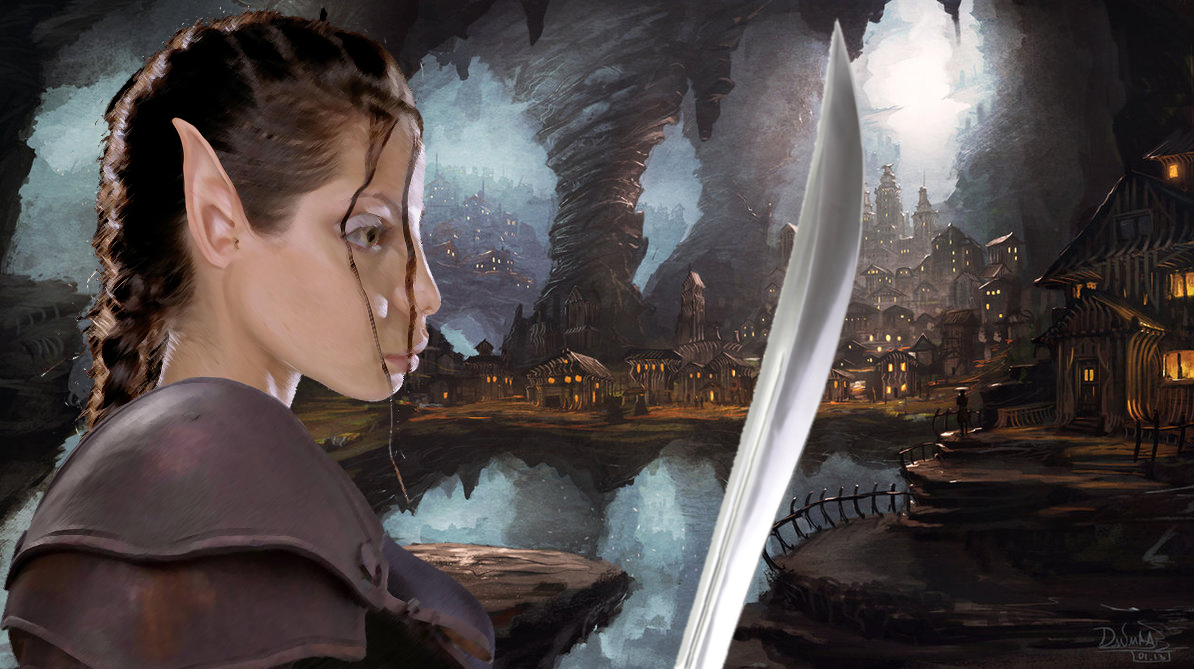
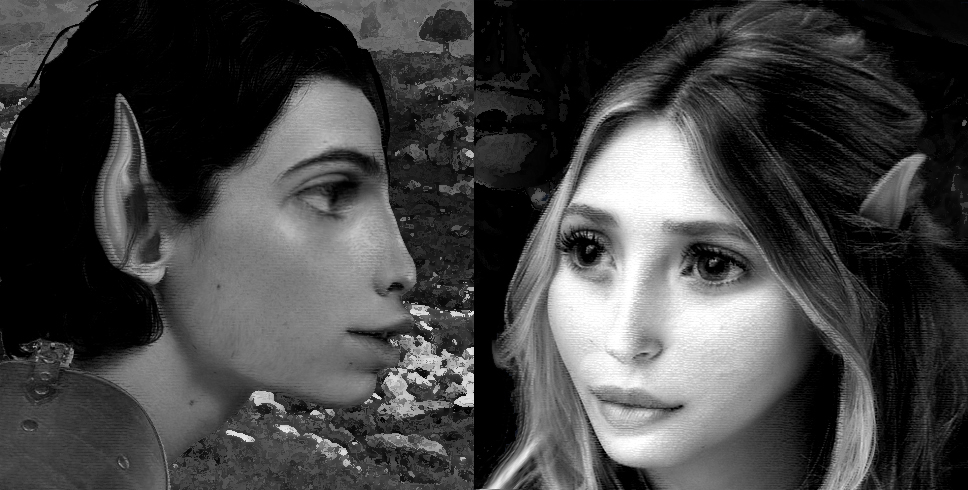
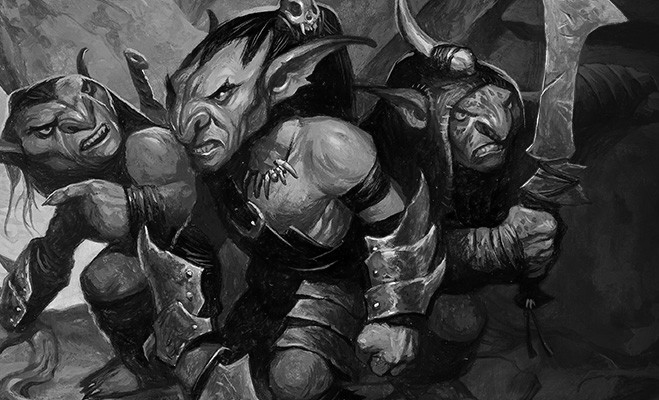
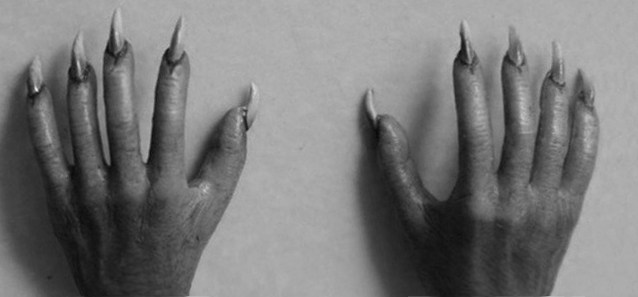

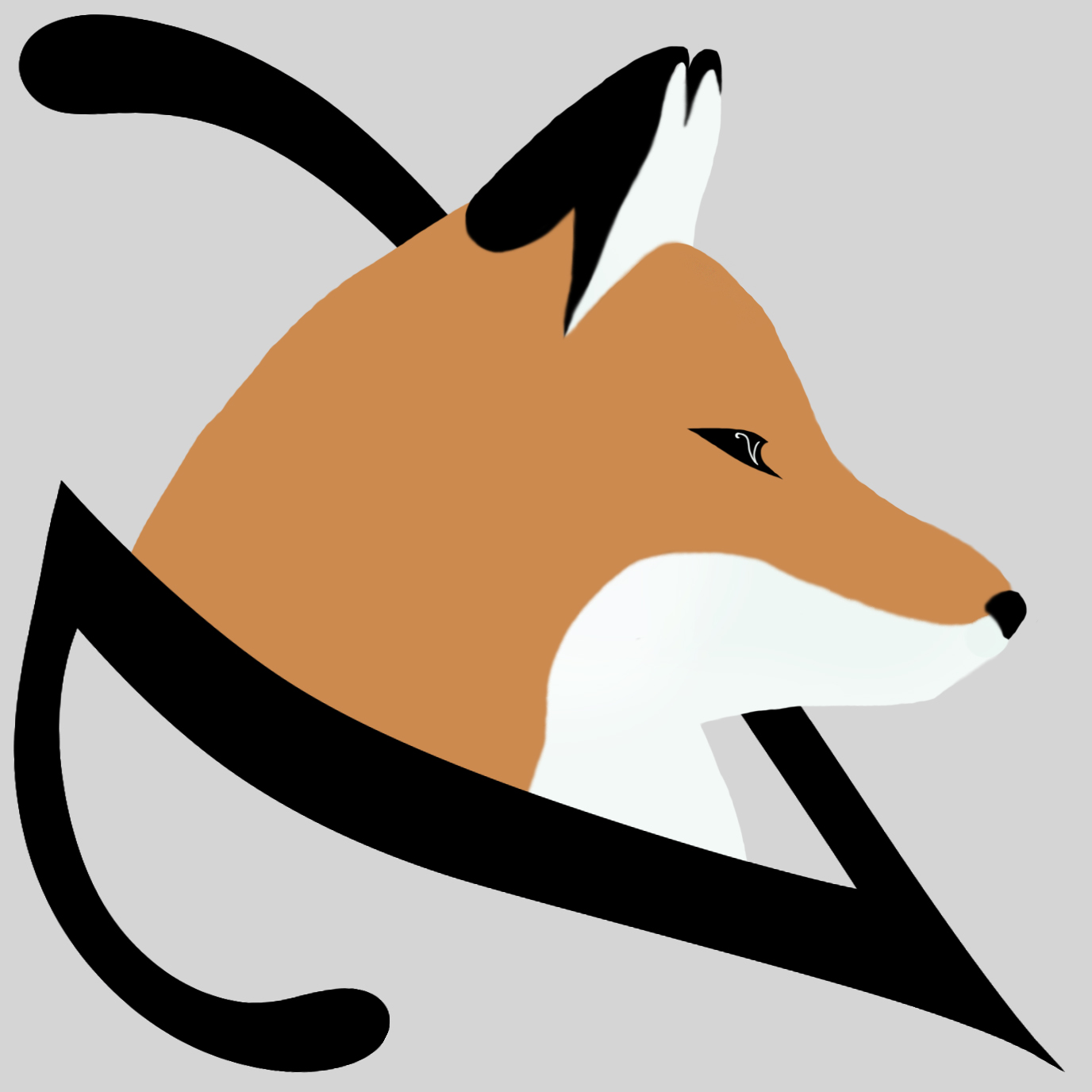
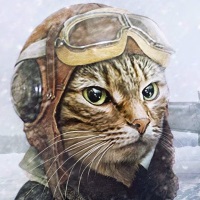
Wow! This is a very detailed article! I like it! I also like how you gave a reason for gnomes being so cheery and goblins for being so angry (to stave off the plague). It seems like gnomes are very mystical and almost viewed with fear (?) by humans? Why do they hide themselves? Is it because of the plague? Or is it for fear of humans or another race? Also, do these Undergelf have the ability to tinker like rock gnomes in 5e do? Is that what mechanics means? Anyways, I really liked this.
Hi Alex. regarding the question if they are viewed with fear, and why (some) are hiding (and some not) i am adding a new part in Interspecies relations. The answer in short: it depends. Longer one you will find there. Regarding the Tech Level: The Undergelf are tinkerers, however the Deep gnomes have not yet reached the level as presented for rock gnomes in 5e. They are sort of amix between Rock gnomes and Deep Gnomes in that regard. Just like about almost every Fantasy culture they (and the Humans and the Elves) are the remnants of whats left from cultures "after the fall". Someone must havebuilt those awesome dungeons and the magic / nonmagic artifacts which know one knows how they work anymore right? However they are deeply determined to recover from this. Which on Ardu is easier said then done, because of the built in Reset Button of the Shadow wars (my Human article has a lot to say about them in that regard). They won't give up however. Also they have a more practical outlook on technic than the rock gnomes. You won't find goldbergian devices built by them. What the Undergelf do have though are inventions like Aqueducts, thus they are able to transport water over lond distances. They have mills and also one underground trackway between the cties of Underhall and Midhall which is powered by watermills alongside an artificial underground channel, which they know how to keep up, but forgot how to build. (see Undergelf ethnicity article, which is not yet completely done, but will be some day). Black Powder is not yet (re?)discovered on Ardu (if it were, the gelf would have it due to their knack for Alchemy). They have things like geothermally powered heating, but steam power lies just beyond their grasp yet. What they have though is the Scientific method, and after the last shadow war just enough time has passed that it's advantage begins to kick in compared to more superstitious cultures. Their steel is harder, their crossbows better, and they excel at trapbuilding and recycling of old tech. Given the "This should work for now..." trait which i gave the Undergelf society they are more a mix of Mad max Mac Gyvers and A-team members however. ("Where did you put the gnomes?" "We imprisoned them in the easily toolshed with easily reconfigurable things sir" <<Sound of cracking door>> "...you idiots!")
Okies, Relationship to other Species added.